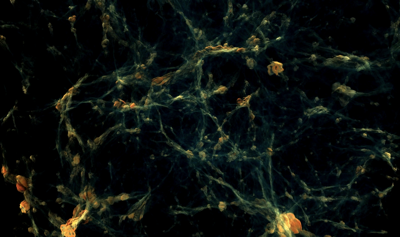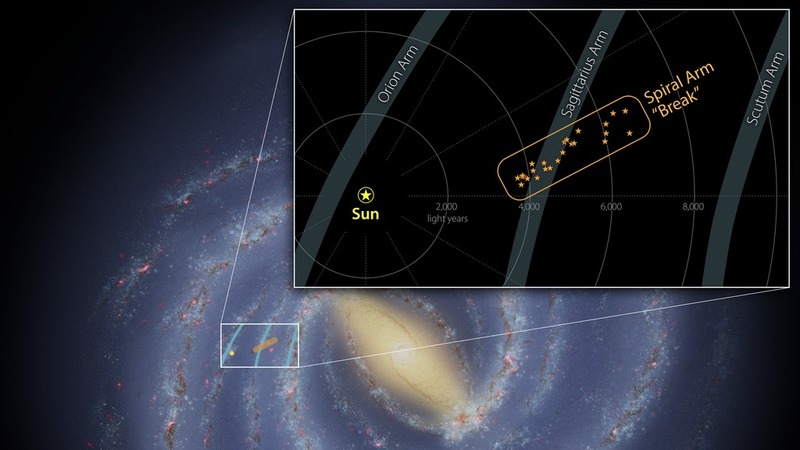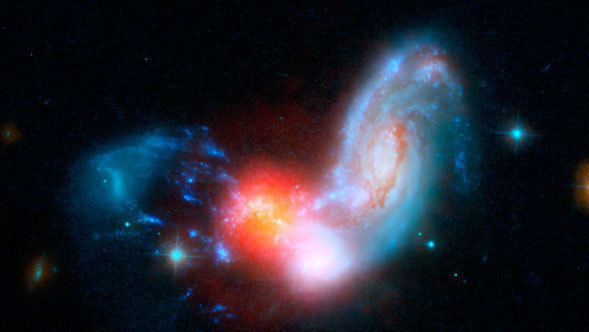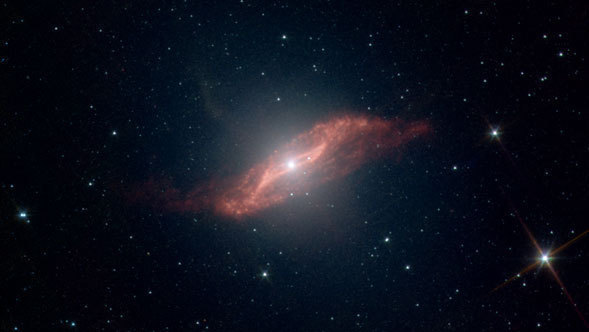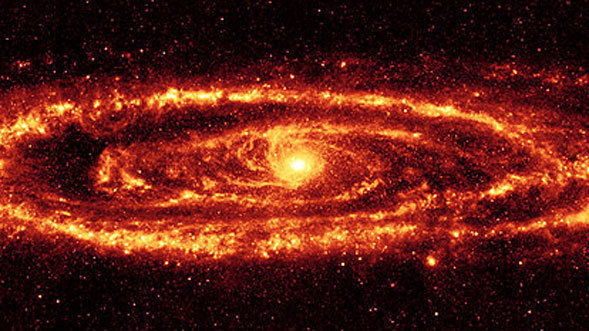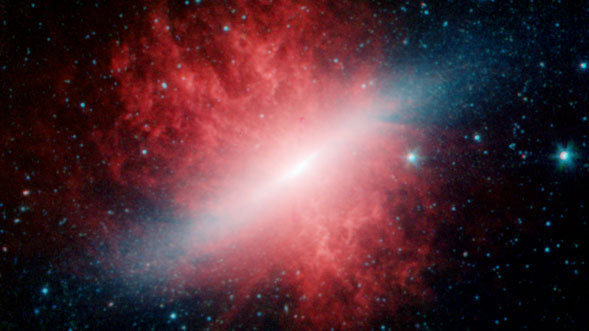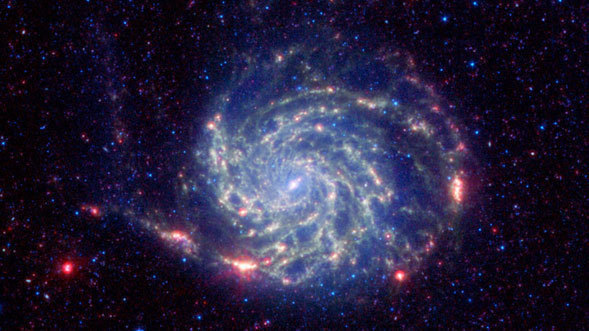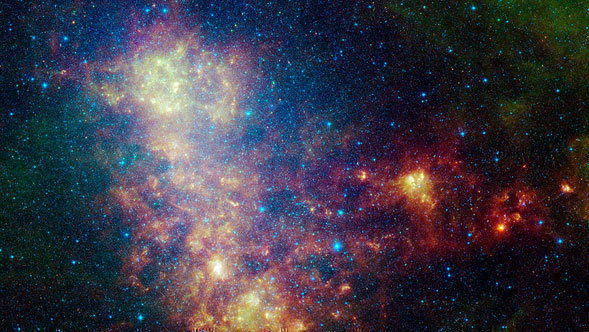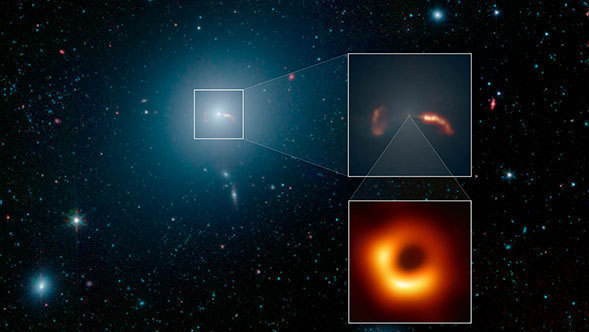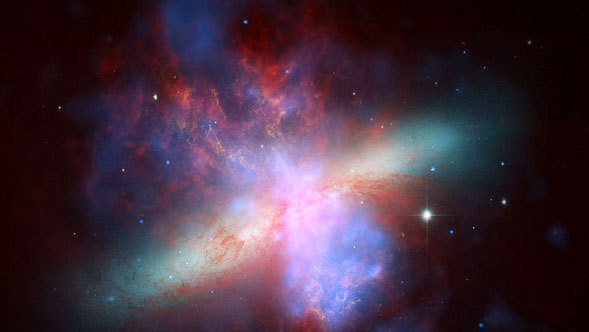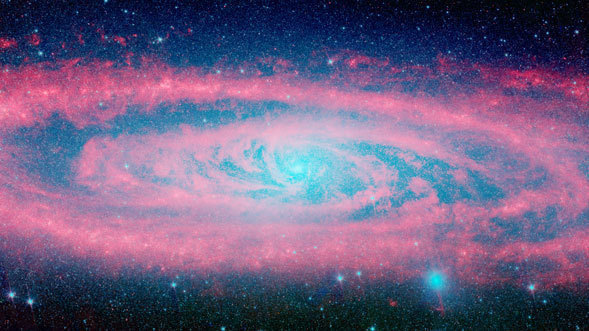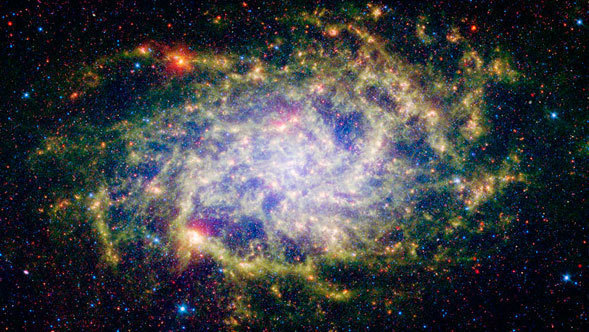We live within the Milky Way galaxy, a flattened disk of hundreds of billions of other stars, but the Milky Way is but one of trillions of galaxies that fill the observable universe. Spitzer’s infrared vision has helped us to more completely understand these immense objects that come in many shapes and sizes.
In the local universe Spitzer has traced out the underlying populations of stars within galaxies that range from cosmic pinwheels to nearly featureless beehives, and mapped the complex patterns of dust that propagate through many of them.
Cosmic dawn, when stars formed for the first time, occurred 250 million to 350 million years after the beginning of the universe, according to a new study led by researchers at UC Santa Cruz, the University College London, and the University of Cambridge.
In images from NASA's retired Spitzer Space Telescope, streams of dust thousands of light-years long flow toward the supermassive black hole at the heart of the Andromeda galaxy. It turns out these streams can help explain how black holes billions of times the mass of our Sun satiate their big appetites but remain "quiet" eaters.
The newly discovered feature offers insight into the large-scale structure of our galaxy, which is difficult to study from Earth’s position inside it.
Astronomers using NASA's Spitzer Space Telescope have found a stunning burst of star formation that beams out as much infrared light as an entire galaxy.
Peering into the "gut" of the galaxy Centaurus A, NASA's Spitzer Space Telescope has captured in unprecedented detail this massive galaxy's last big meal: a spiral galaxy twisted into a parallelogram-shaped structure of dust.
NASA's Spitzer Space Telescope has captured a stunning infrared view of Messier 31, the famous spiral galaxy also known as Andromeda.
Where there's smoke, there's fire -- even in outer space. A new infrared image from NASA's Spitzer Space Telescope shows a burning hot galaxy whose fiery stars appear to be blowing out giant billows of smoky dust.
The Pinwheel galaxy is gussied up in infrared light in a new picture from NASA's Spitzer Space Telescope.
NASA's Spitzer Space Telescope has captured an action-packed picture of the nearby Small Magellanic Cloud, a small galaxy that looks like a wispy cloud when seen from Earth.
On April 10, 2019, the Event Horizon Telescope (EHT) unveiled the first-ever image of a black hole's event horizon, the area beyond which light cannot escape the immense gravity of the black hole. That giant black hole, with a mass of 6.5 billion Suns, is located in the elliptical galaxy Messier 87 (M87). EHT is an international collaboration whose support in the U.S. includes the National Science Foundation.
While some galaxies are rotund and others are slender disks like our spiral Milky Way, new observations from NASA's Spitzer Space Telescope show that the Sombrero galaxy is both.
NASA's Spitzer, Hubble, and Chandra space observatories teamed up to create this multi-wavelength, false-colored view of the M82 galaxy. The lively portrait celebrates Hubble's "sweet sixteen" birthday.
The Andromeda galaxy, named for the mythological princess who almost fell prey to a sea monster, appears tranquil in a new image from NASA's Spitzer Space Telescope. The mesmerizing infrared mosaic shows red waves of dust over a blue sea of stars.
This new image of the Triangulum galaxy is being released as part of the 'Around the World in 80 Telescopes' event for the International Year of Astronomy.
A new image from NASA's Spitzer Space Telescope is helping astronomers understand how stardust is recycled in galaxies.
Stars sparkle in this lively new view of the Small Magellanic Cloud from NASA's Great Observatories.
Supernova explosions and the jets of a monstrous black hole are scattering a galaxy's star-making gas like a cosmic leaf blower, a new study finds. The findings, which relied on ultraviolet observations from NASA's Galaxy Evolution Explorer and a host of other instruments, fill an important gap in the current understanding of galactic evolution.
A newly processed collection of infrared observations of more that 200 galaxies, based on data available from NASA's Spitzer Space Telescope archive, are being released to the science community. Dr. George Bendo of the Jodrell Bank Centre for Astrophysics will highlight the new imagery at the National Astronomy Meeting in Manchester from 27-30 March.
The cold dust that builds blazing stars is revealed in new images that combine observations from the Herschel Space Observatory and Spitzer Space Telescope. The new images map the dust in the galaxies known as the Large and Small Magellanic Clouds, two of the closest neighbors to our own Milky Way galaxy.
Like the Milky Way, Messier 83 is classified as a barred spiral galaxy due to the bar-like pattern of stars that run through its center.
Stars appear to be caught in a galactic web in this new image from NASA's Spitzer Space Telescope.
Harvard-Smithsonian Center for Astrophysics
A new image of two tangled galaxies has been released by NASA's Great Observatories.
Imagine finding a living dinosaur in your backyard. Astronomers have found the astronomical equivalent of prehistoric life in our intergalactic backyard: a group of small, ancient galaxies that has waited 10 billion years to come together. These "late bloomers" are on their way to building a large elliptical galaxy.
